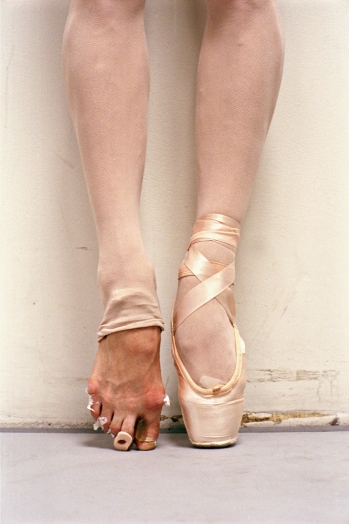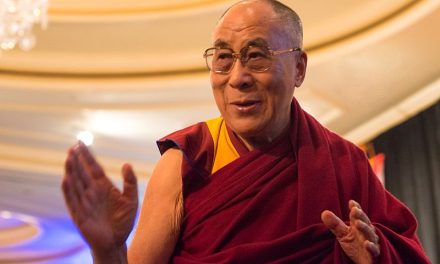By Daniel Scharpenburg
Of all the things my teacher transmitted to me, he emphasized Hua Tou Meditation as the most important. It was the favorite meditation style of Master Xu Yun, who was my teacher’s teacher’s teacher.
It was a favored practice of a lot of Chinese Zen Masters, but Masters in other countries usually favored different practices.
Anyone can teach simple breathing meditation, while it’s true that some people can make it more interesting than others, anyone can teach it. The Hua Tou is a deeper practice.
Hua Tou is a term that hasn’t been translated into English effectively. The literal meaning is ‘word-head’ which makes no sense. I’m going to translate it as “Meditative Inquiry”. But bear in mind that that term doesn’t really express it. We are limited by language and most teachers think just leaving it “hua tou” is the best course of action. (just as words like ‘koan’ haven’t been translated into English.)
It’s said that one has to have a core concentration practice, such as following the breath or reciting a mantra, before one can engage with a hua tou.
One must cultivate an ability to focus in order to succeed at this practice.
This is not a practice for the casual meditator. It isn’t a practice for those who simply want to meditate to relax or manage stress or anxiety. It’s a practice for mystics. For those who want to Awaken and are willing to be diligent and determined to become Enlightened.
So, with all of that being said, you’re probably wondering what it is.
I will tell you.
It was created around a thousand years ago as a meditation style that was just as useful for laypeople as for monks and nuns. It’s a practice that is designed to be carried with you throughout daily life, not just done while sitting.
So, what is it?
It’s a question—generally a who or what question. Ideally given to you by a teacher, but self selecting them isn’t unheard of.
To practice, we concentrate on this question over and over, repeating silently with a questioning and open mind. And then think about who or what is doing the thinking. When we do this in meditation, we do it after the mind has been calmed through an initial period of following the breath or some other concentration practice.
Master Sheng Yen described three stages of Hua Tou pracitce: Reciting, asking and investigating.
Through these stages, it’s important not to try to answer the question with the intellect, but just to ask the question mindfully and persistently, with a sincere wish to know. Through this constant practice, insight arises.
Master Xu Yun said this: “The important thing is to stick to Hua Tou at all times, when walking, lying, or standing. From morning to night observing Hua Tou vividly and clearly, until it appears in your mind like the autumn moon reflected limpidly in quiet water. If you practice this way, you can be assured of reaching the state of Enlightenment.”
So, what kinds of questions am I talking about?
The questions are simple ones that seek to penetrate the meaning of who and what we are.
Really simple ones exist like:
“Who Am I?”
“What is this experience?”
“What is my true nature?”
The one my teacher gave me was: “Who is seeking Enlightenment?”
Master Xu Yun’s Hua Tou was: “Who is carrying this corpse around?”
Master Hsuan Hua’s Hua Tou was “Who is being mindful of the Buddha?”
Master Han Shan’s Hua Tou was: “Who is hearing?”
These are the types of questions we take on. Usually the question is assigned by a qualified teacher, although there are instances in Ch’an history where really capable individuals came up with their own.
We sit with these questions for a while, but an important aspect of the question is that we’re also taking it out into the world with us.
We can repeat it in our minds.
There are many opportunities throughout the day to repeat this question in my mind. I can repeat it while I’m in the shower, in the car while I’m driving, while I’m eating, etc. I don’t carry it all the time, but when I feel that I’m starting to lose my focus on the path, I can go back to repeating my Hua Tou.
It’s just “Who is seeking Enlightenment?” over and over.
When you get down to it, with these questions, what we’re really asking is “Who am I?” and we’re doing this to disentangle ourselves from our ego, to separate from our small self and come to a more expanded awareness.
This is not a meditation style to help us relax. It’s not intended to increase our focus or to manage our mental problems.
Self inquiry meditation is only used to bring us to the other shore, to Enlightenment.
It’s purpose is to break through the paradigms and delusions that have held us back from seeing our true nature.
And it works.
But only if you’re determined to make it work.
Editor: Ty H Phillips
Photo: (source)
Comments
- Review of The Power of Mind: A Tibetan Monk’s Guide to Finding Freedom in Every Challenge {Book Review} - August 23, 2022
- The Path to Peace: A Buddhist Guide to Cultivating Loving Kindness by Ayya Khema {Book Review} - July 21, 2022
- That is Not Your Mind! Zen Reflections on the Surangama Sutra {Book Review} - July 16, 2022





